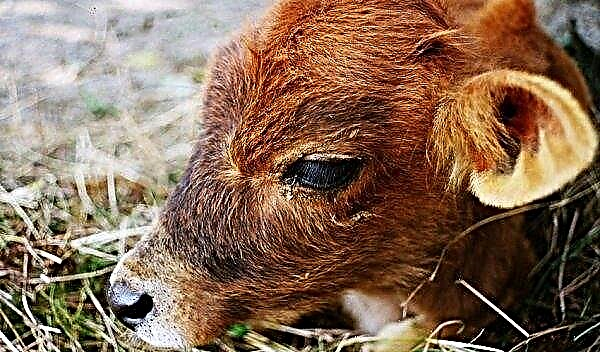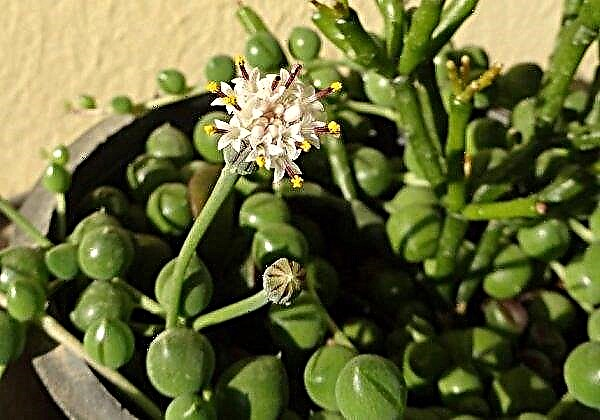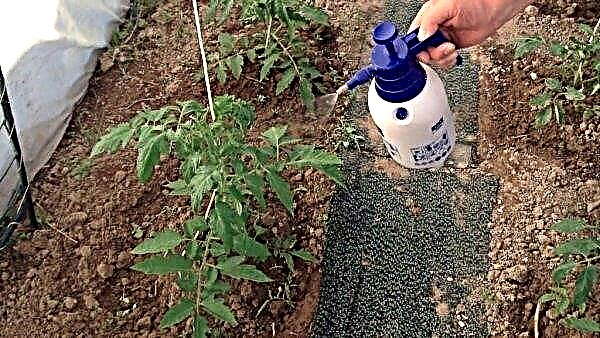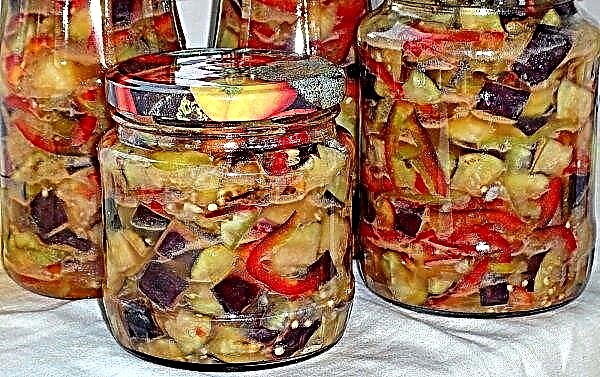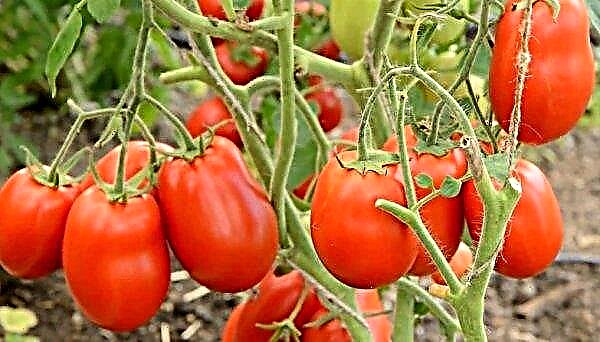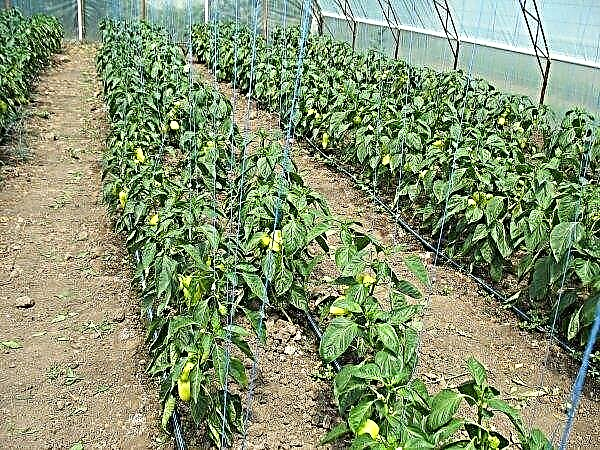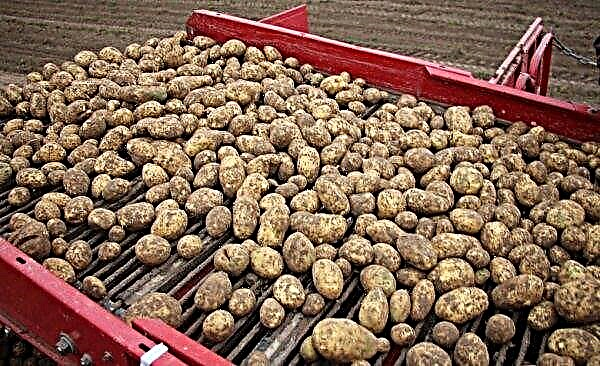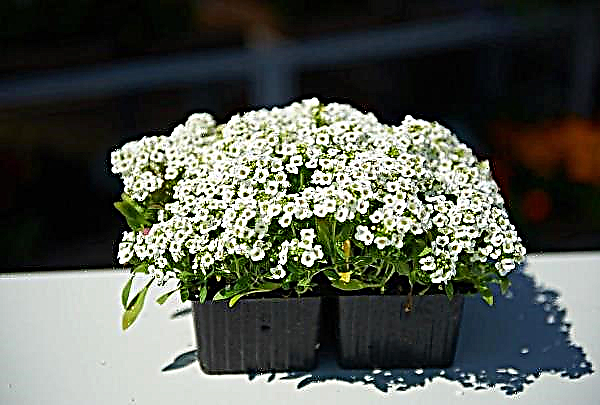Thuja is an evergreen tree that looks like cypress. A lush plant is used for landscaping and air purification. Coniferous beauty appeared on the territory of Russia relatively recently. North America is considered her homeland. The tree is unpretentious to care for, it can be grown independently in the country, but there are several nuances that will help to properly prepare the plant for winter.
Fall Care Features
It is supposed to take care of the thuja by conducting the following events:
- watering;
- top dressing;
- mulching;
- pruning
- treatment for diseases and pests.

To care for the plant before frost, you can use several popular methods. The main one is pruning: it helps protect the tree from pests and diseases, giving it a neat appearance. Since the liquid in the plant circulates year-round (during wintering, metabolic processes only slow down), it must be watered abundantly before the onset of winter.
Did you know? Thuja has a rich and lasting aroma. It is used to make perfumes.
Thuja top dressing is extremely rare. Only young trees need it. In order not to cause active growth of new shoots, it is necessary to feed a coniferous plant in September.
Sanitary pruning
If a tree looks healthy and beautiful, its branches remain green and lush, then, as a rule, it does not need pruning. Preventive pruning involves cleaning the plant from yellowed old needles. In the process of circumcision with the help of a garden pruner, dry and diseased branches are discarded - they must be cut near the trunk.
The optimal time for the procedure is May - June or the end of summer. Such preparation is carried out exclusively in favorable rainy weather so that the plant has the opportunity to more likely heal the wounds before winter and to prevent the entry of pathogens.
Important! Thuja is trimmed regularly, but in small parts. It is not recommended to trim more than 1/3 of the branch at a time.
If the thuja undergoes formation, then during trimming it is still necessary to control its shape. For this, it is additionally worth trimming branches that develop incorrectly and in the wrong direction in order to maintain the desired appearance of the tree. In the first years after planting, it is better to avoid pruning, because the plant needs time to get comfortable in a new place and take root well.
Watering and feeding
Abundant watering is required by plants that are located in regions with characteristic autumn droughts. Watering before winter is also called water-charging. Its effect is expressed in the fact that the tree will be saturated with moisture, and the earth at the root will be saturated with water. This will allow the soil to freeze slower and the tree to remain resistant to any climate change.
Feeding is carried out using potassium-phosphorus fertilizers. They can be found in nurseries and specialty stores. If the tree has already been fertilized in the spring, then in autumn it does not need additional fertilizing.
Pest and Disease Treatment
The best time to process a tree from diseases and pests is autumn. Such procedures are carried out gradually.
The most common pain for thuja is rust. You can protect the plant from it, as well as from fungus, using copper sulfate and Bordeaux fluid. For treatment, you need to adhere to the proportions of 30 grams of the drug per 10 liters of water, for prevention, the dose of the drug is reduced to 10 grams.
Often a plant affects aphids. "Fufanon", "Decis", "Actellik" will help get rid of it and other insects: the trees have to be sprayed. All drugs are used according to the instructions that accompany them.
Root system stimulation
This procedure is carried out using special fertilizers. Thuja usually does not require additional growth stimulation: gardeners use such preparations when the root of the plant refuses to adapt to a new place.
Did you know? In 2002, German researchers found that thuja extract can slow the growth of hepatitis A.
Stimulation is best done in the spring, when the thuja has survived frosts and is not yet ready to get used to the hot sun. Means for this can be purchased at any specialized store.
What to do if thuja begins to turn yellow
Although the thuja is evergreen, this cannot guarantee that its needles will not turn yellow. The most common cause of yellowness on the branches is the loss of chlorophyll. The needles die off, and in its place a new one appears.
Closer to winter, after the first frost, the needles may turn yellow due to the natural protection from the cold. It is not necessary to mercilessly remove branches with yellowed leaves - just remove the yellow needles. In no case should you leave extinct needles: it can be an ideal environment for the propagation of fungal infections.
Important! The process of dying green needles is the norm for thuja - this happens every 3-6 years.
Thuja preparing for winter
When it comes to preparing thuja for winter, the first thing that comes to mind is wrapping up. It is necessary to wrap the thuja only in the first years of her life. It will help not only to keep the surface root system intact, but also to protect the young tree from the sticking of cold snow, deformation of branches.
To protect against street cold, it is also customary to use mulching. It will help protect moisture, protect the root from frost and damage.
Mulching
The procedure is carried out in the fall, after heavy watering. The material for the mulch will suit different, the main thing is that it remains loose. Mainly for this purpose, gardeners use compost, dry leaves and sawdust, sometimes peat. The method of preparing for winter is especially relevant for plants under the age of 4 years.
A layer of mulch must be laid on top of the base of the tree and along the diameter of the root system. Its thickness is up to 10 cm.
Thuja insulation and shelter
After mulching, you can proceed directly to the shelter and warming of the plant. Shelter tree is not carried out in all cases: if the winter is warm enough, then it is not necessary.
A tree requires shelter if:
- winters are cold in the region, air temperature reaches critical levels: –27 ° С and more;
- landing was carried out this year;
- thuja is located in an open area, well-blown by the wind.
 The best material for shelter is burlap. For these purposes, it is strictly forbidden to use cellophane and other films: under them, the plant will be blocked and, most likely, will run into a fungus. To prevent the plant from being burned by sunlight, it must be covered with gauze, a cotton cloth.
The best material for shelter is burlap. For these purposes, it is strictly forbidden to use cellophane and other films: under them, the plant will be blocked and, most likely, will run into a fungus. To prevent the plant from being burned by sunlight, it must be covered with gauze, a cotton cloth.How to keep thaw in a pot in winter
Often young thuja are grown in pots and tubs. The storage temperature of such a tree should not fall below 0 ° C. It is better if it will winter in a room where the temperature does not fall below + 5 ° C. The flowerpot must be wrapped with cloth. To do this, you can use mineral wool. The tree itself is not covered, but in especially severe cold it is recommended to wrap it in burlap.
If there is no light and warm enough place to store the tree, in the fall it can be immersed directly in the ground with a pot in the street, in order to dig out in the spring, remove the pot and plant it on a permanent habitat.
Thuja does not require special care: all the above methods are simple, even a novice will cope with them. If all the rules for preparing the tree for winter are fulfilled, it will grow lush and healthy, and will delight others for many years.

